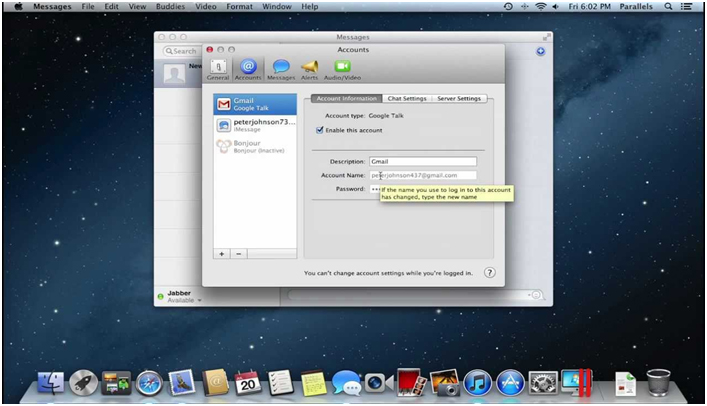How To Set Up Imessage For Mac On Iphone
Established February 9, 2015, Apple World Today is a resource for all things Apple and beyond. AWT publishes news stories, credible rumors and how-to's covering a variety of topics daily. As a trusted tech blog, AWT provides opinion and analysis on the news in addition to the facts. Make sure your Mac's running OS X Yosemite (10.10 or higher) and your iPhone is running iOS 8.x. Click on the Messages app in your Mac to open it. Go to your iPhone. Tap Settings > Messages. Tap Text Message Forwarding. You'll see a list of all your devices linked to your Apple ID. Choose the one you want to send and receive messages and select On. You'll see a six-digit code pop up in Messages on your Mac. If you know that your friend has an iPhone, iPad or Mac, you should be able to receive iMessages – but iMessage may not be enabled, or not be registered. Tell your friend to set up iMessage on your device by going to Settings> Messaging and including iMessage.
Despite the availability of a number of viable options, iMessage remains my best bet for communicating with people who use the Apple ecosystem. In addition to being feature rich, the email application is without a doubt the most secure. If you switched to macOS, you would (most likely) be excited to set up iMessage on your Mac to start freewheeling conversations with your friends.
Starting with the application Messages for macOS is as simple as possible. Just log in and choose the e-mail address and phone number you want to use. More after the break: Shortcuts: How to configure and use iMessage on Mac When you open Messages application, it asks you to sign in using your Apple ID. To have a seamless experience, you can sign in using the same ID that you use on your other devices. Launch Messages app on your Mac and sign in using your Apple ID and password. Note: If you have enabled two- or two-factor authentication for your login Apple, enter your verification code. Now click Messages on the menu bar and choose Preferences.
Then click on the Accounts tab and then choose the telephone number and e-mail addresses you wish to access. Once you have From Source.

How to Set up and Use iMessage in iPhone/iPad/Mac iMessage is an instant messaging service built-in Apple device. It allows users to send texts, documents, photos, videos, contact information, and group messages over Wi-Fi or cellular data to other iOS or OS X users.
With iOS 10, you can even personalize your. • • • How to Set up and Use iMessage in iPhone/iPad If you have enable iCloud in your iPhone/iPad, iMessage was activated along with it. If not, you need to re-activate it.
It's easy to set up iMessage on Settings app. Step 1: Go to Settings > Message.
Step 2: Turn on iMessage and wait for it to activate. Step 3: Tap Use your Apple ID for iMessage.
How To Setup Imessages
Then sign in with your Apple ID and password. How to Set up and Use iMessage in Mac iMessage is the Apple messaging service you get automatically with your Apple ID. If it's not already set up, you're asked to sign in when you first open the Messages app.  How to send an iMessage in iPhone/iPad Once iMessage activates you can send and receive texts, photos, or videos information to iOS devices and Macs over Wi-Fi or cellular-data networks with other Apple users just like SMS and MMS. Step 1: Open Messages, tap, and enter a contact or tap on an existing conversation.
How to send an iMessage in iPhone/iPad Once iMessage activates you can send and receive texts, photos, or videos information to iOS devices and Macs over Wi-Fi or cellular-data networks with other Apple users just like SMS and MMS. Step 1: Open Messages, tap, and enter a contact or tap on an existing conversation.
Step 2: Input content you want to send and then tap the Up Arrow. How do you know if you're sending an iMessage or an SMS/MMS?
IMessage requires that both the sender and recipient are using an iOS or Mac device, and that a data connection is available. You can easily tell messages are sent as iMessage or SMS/MMS from the color of text bubble. If you have turned on iMessage. Passport photo creator for mac book. You can send texts, photos, or videos to iOS devices and Macs over Wi-Fi or cellular-data networks. These messages are always encrypted and appear in blue text bubbles.
If iMessage is offline, your iPhone may try to send over SMS/MMS. These messages appear in green text bubbles on your device.